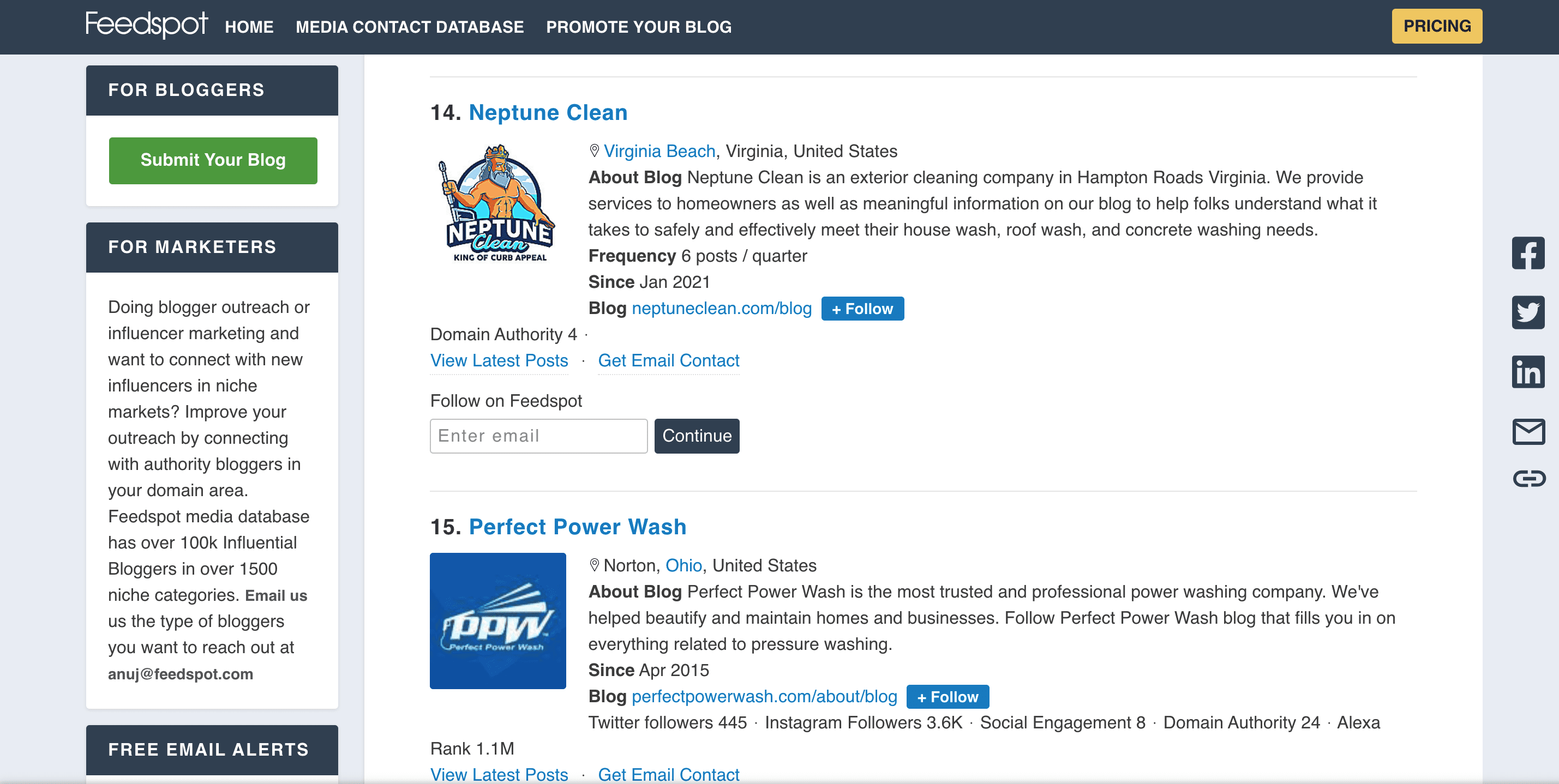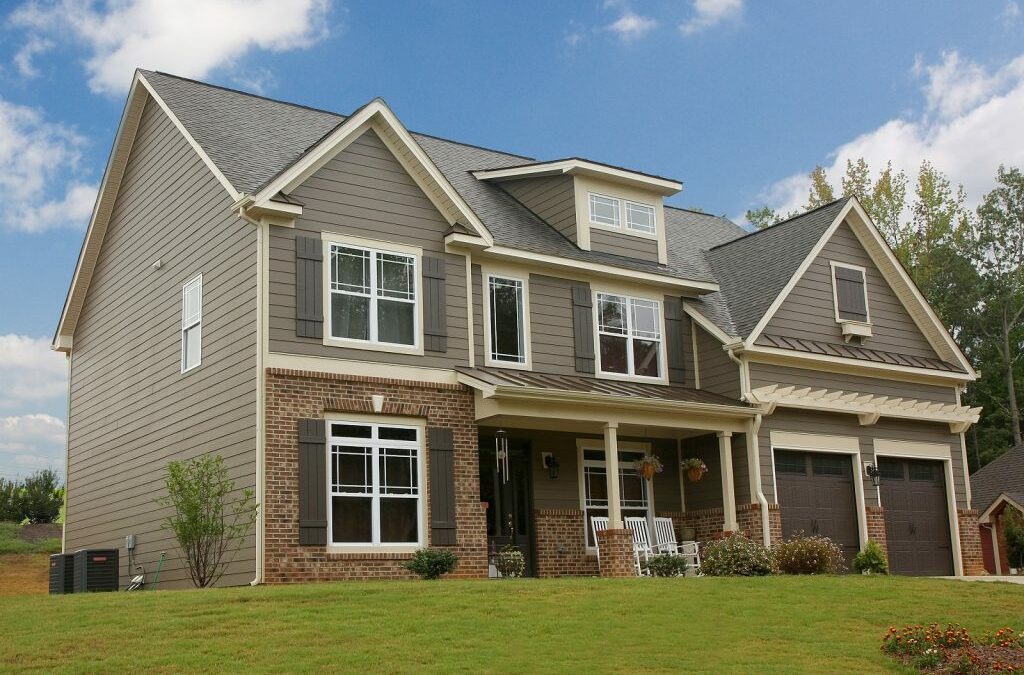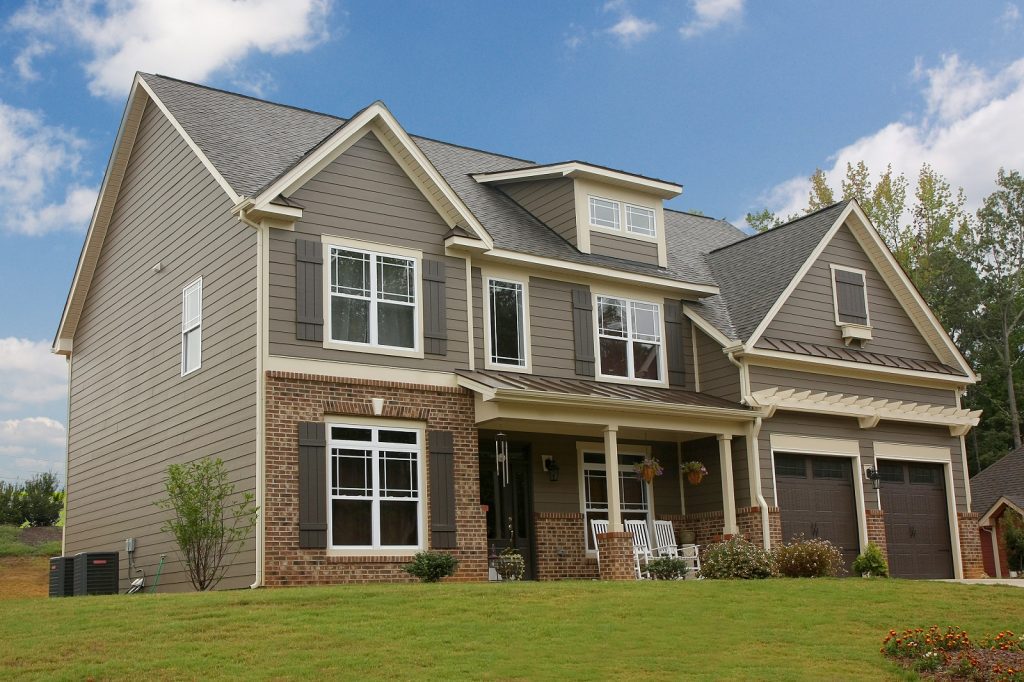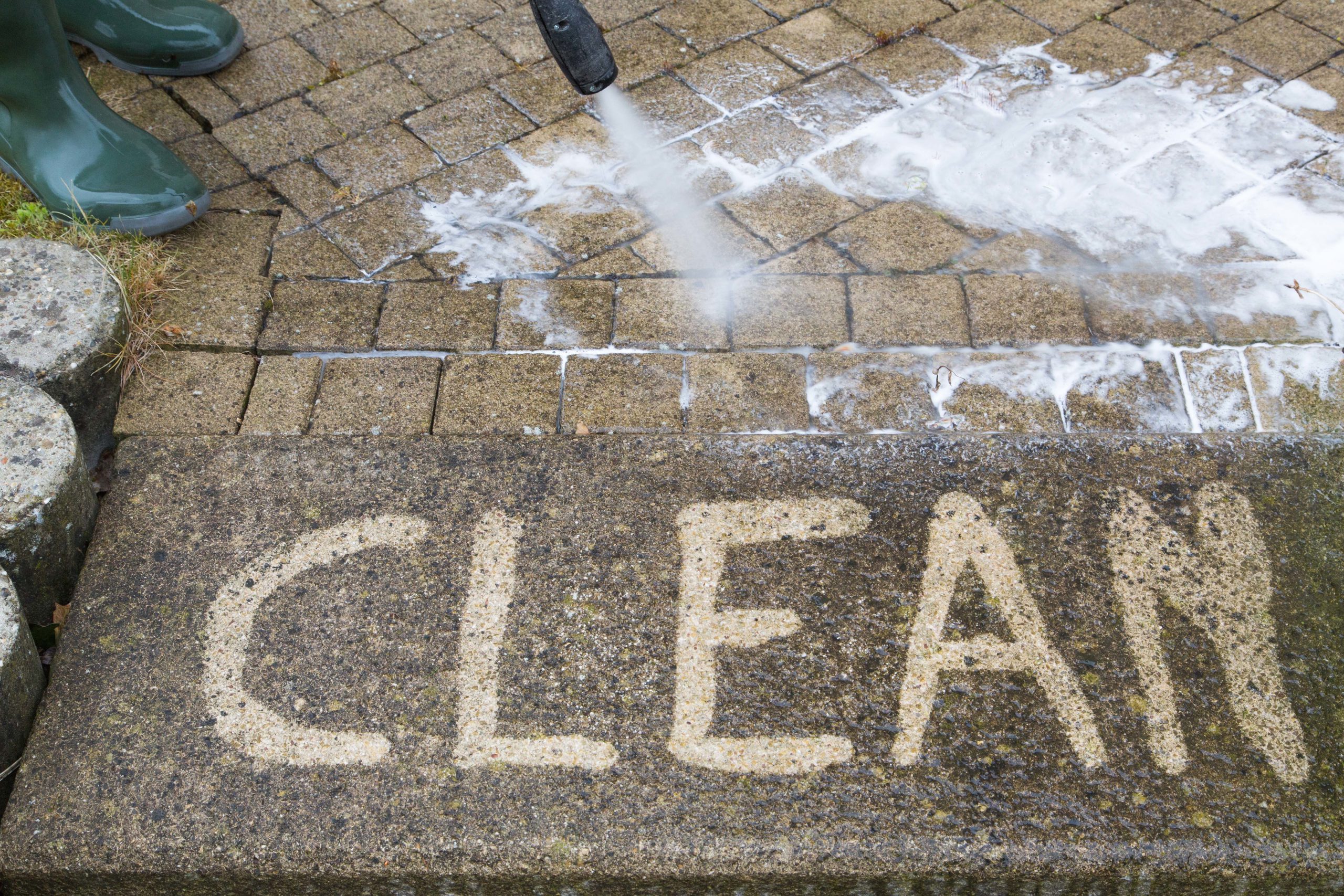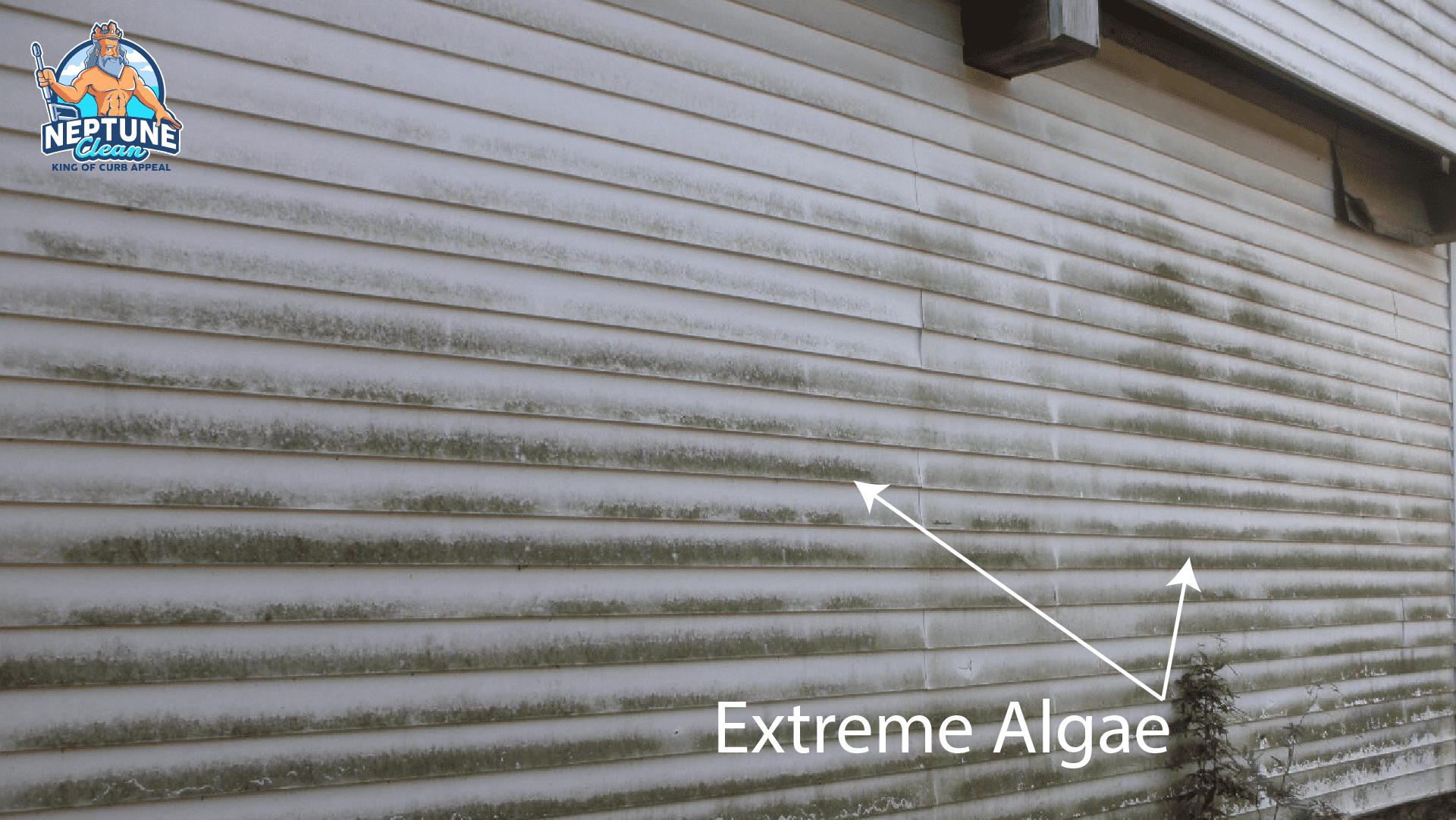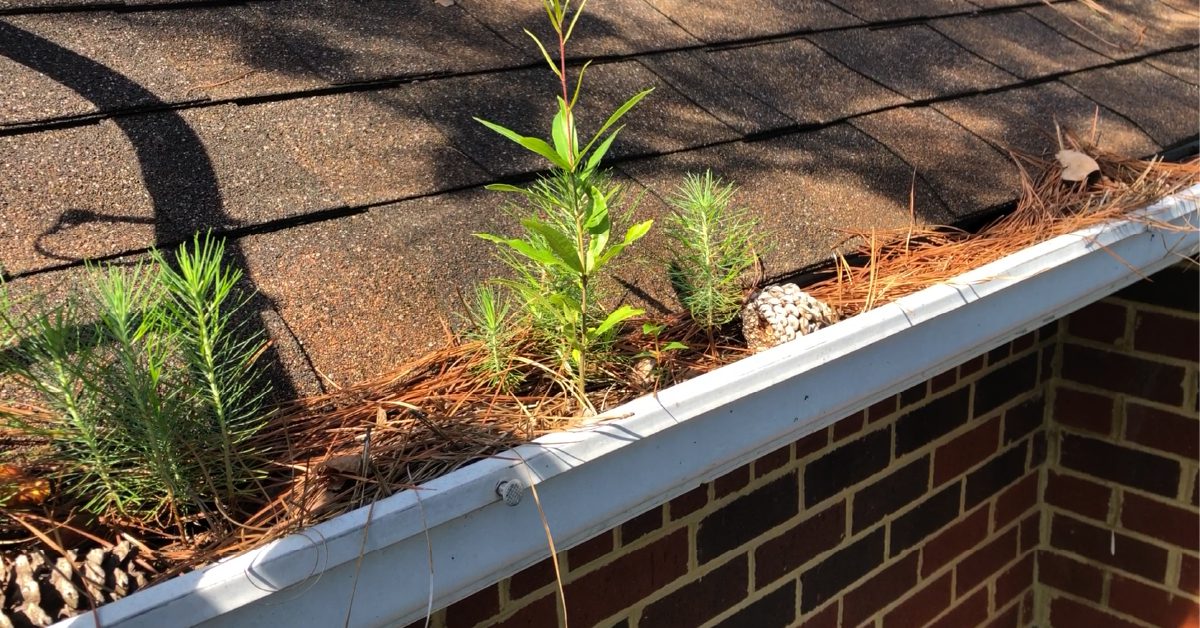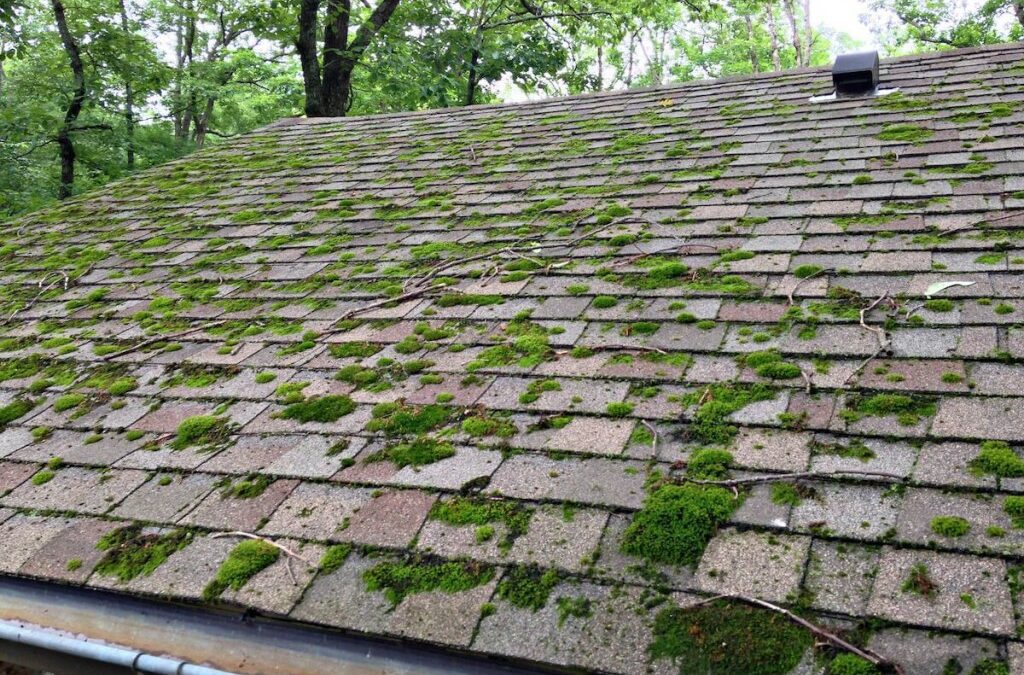
Moss Roof Cleaning – #1 Best Way To Remove Moss from a Roof
When I speak to home owners about moss Roof Cleaning, I’m very open about the fact that the black streaks we normally treat are harmless and doesn’t effect the life of the shingles. The algae causing the black streaks on your roof is actually a cyanobacteria called Gloeocapsa Magma.
Moss or lichen on the other hand will cause damage to your roof if left untreated. A moss roof cleaning is necessary because moss on a roof is caused by lots of moisture and lots of shade. The moss spores arrive on your roof carried by wind or animals and can easily spread throughout neighborhoods. Unlike algae, moss can be detrimental to asphalt shingle performance.
Moss can thrive on roofs because it’s a non-vascular plant that obtains water through its leaves and not through a root system. Here in North America, moss tends to grow on north facing roof planes that receive less direct sunlight and stay damp longer than south facing planes.
Addition moss roof cleaning factors include trees that overhang a roof constantly shade any sunlight and our humid coastal climate helps to holds in moisture and acts as a food source for moss. All these conditions create the perfect environment for moss. Cutting back trees is recommended if you have moss growing on your roof. This will let some sunlight in and prevent it from growing back once cleaned
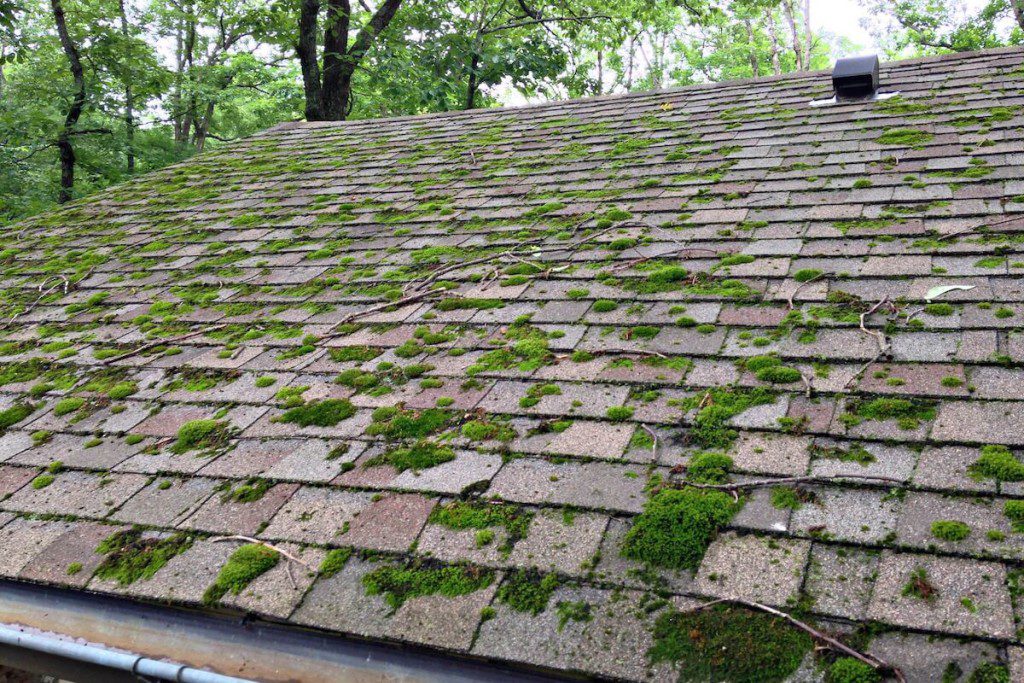
Moss Roof Cleaning Recommendations
According to the Asphalt Roofing Manufacturers Association, Moss can cause the leading edges of the shingles to lift or curl, which increases the risk of shingle blow-off during wind events. In severe cases, moss build-up can cause lateral water movement resulting in moisture damage to the roof deck or may even cause leaks.
The most effective method of moss roof cleaning begins with a light brushing of the roof with a stiff bristle brush to remove the large growth. Next, a strong antimicrobial mix of six percent liquid chlorine bleach and water is applied to ensure the entire plant is treated. Moss roof cleaning requires more work then cleaning the algae causing black streaks normally encounter here in Hampton Roads Virginia.
Moss roof cleaning is more costly because it has to be manually brushed to remove the larger chunks before treating with the potent antimicrobial cleaning solution. This means we must access the roof increasing danger to employees and consequently, increasing the price. This is especially true for steeper roof pitches. Some applications may even require a man-lift.
Next we apply a strong antimicrobial cleaning solution with a softwash sprayer and allow the solution to dwell on the roof surface for 15 to 20 minutes, and then rinse thoroughly with low pressure water. We’re sure to take proper precautions to protect landscaping and surrounding areas from the cleaning solution runoff.
Do you have moss or those unsightly black streaks ruining the appearance of your home? The sooner you take care of it the cheaper the cost so don’t wait, if you see moss or lichen growing on your roof, call your Softwash Super Hero.
We’ll get a quote out to you instantly to bring back your home’s natural appearance while also protecting your largest investment.
Call Neptune Clean today: 757-384-0411
What is moss on a roof and how do you remove it?
Moss can grow on all kinds of roofs, no matter how new or old, shingled, or flat. Here are some tips on how to clean the moss off your roof, whether you’re doing it yourself or hiring someone else to do it for you.
Why moss grows on roofs
Moss grows well in shady, damp areas like roofs. Not only does moss look bad, but it’s also quite dangerous to your health. Moss growing on your roof can increase your chances of getting sick because moss gives off spores and encourages lichen growth, which can contain harmful bacteria. It’s important to keep your home clean by removing moss from your roof regularly. Not to mention it can destroy your shingles.
Maintaining your home can help prevent moss growth
One of your best bets for preventing moss growth is to keep up with regular cleaning. Have your roof treated at least once per year of you have heavy tree coverage. Trees blocking the sun is keeping your home’s roof from drying it out completely. Consider trimming back trees to let a little light in.
If it does grow, here’s what to do about moss
Moss roof cleaning is dangerous so it’s best left to a professional. The process to remove moss combines manually brushing off the moss and chemically treating your roof depending on where it grows. Chemical methods can damage your roof’s surface, so be sure to read up before using them. To prevent moss from returning to your home’s exterior surfaces consider the advice from the previous paragraph.
How long does moss removal take
Moss removal really depends upon how heavy the growth is and how much roof is affected. Mosses are epiphytes—plants that grow attached to other plants but get their water and nutrients from moisture in the air or in soil, rather than by drawing nourishment directly from their host plant. In this case, the host plant are the shingles on your roof.
How much does moss removal cost?
Moss removal costs vary depending how long it will take to remove. Roof work is dangerous so it will be expense to have professionally removed. If moss has been growing for several years, chances are good that significant mold has built up under and around it, which means you’ll likely need to hire an experienced professional for a thorough cleaning. If your roof is not steep, moss roof cleaning can be accomplished by someone with no experience whatsoever—all it takes is some elbow grease and time. Keep in mind that moss may grow back quickly if moisture or mold persists in your roof’s shingles.


